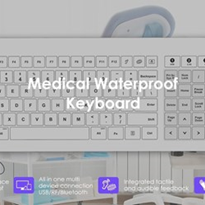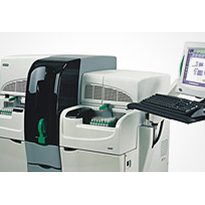Machine learning algorithms are already able to interpret scans, blood work, & assist with live assessments of patients.
The potential for AI is vast, from diagnosing cancers earlier than ever before to finding evidence in CT scans of strokes.
Artificial intelligence also offers the possibility of reducing medical errors by removing or minimising human error in the diagnostic process. AI may also have a role to play in improving the quality of care by providing more precise care & treatment plans.
A team of doctors led by UVA Health’s James H. Harrison Jr., MD, PhD, has given us a glimpse of tomorrow in an article on the current state and future use of artificial intelligence (AI) in the field of pathology. And that potential is huge, they report.
The article provides some fascinating insights & amazing possibilities into what artificial intelligence might eventually do for healthcare & diagnostic accuracy.
From an “augmented reality” microscope that automatically identifies and labels important aspects in the field of view in real time to complete diagnostic image classification systems.
Using AI to make educated diagnosis has, until recently, been the domain of Tony Stark and others in sci-fi movies.
But one thing is certain – AI already is, and will continue to improve healthcare in the future.
“AI and especially machine-learning algorithms introduce a fundamentally new kind of data analysis into the health-care workflow,” the team of doctors write in the report.
“By virtue of their influence on pathologists and other physicians in selection of diagnoses and treatments, the outputs of these algorithms will critically impact patient care.”
Current uses & its potential
Artificial intelligence is in its infancy for healthcare applications.
Only a few specific uses have been approved for technologies offering AI-based medical diagnostics, such as blood cell classification and the evaluation of cervical tissue.
But in research labs, scientists are using machine learning to classify and grade lung and prostate cancer, predict outcomes in lung and brain cancers, measure breast cancer proliferation, predict bladder cancer reoccurrence and much more.
The report authors, while describing the potential as ‘tantalizing’, are also quick to caution that potential regulations that may be needed along the way to ensure AI is used safely and effectively.
If unregulated the risks associated with the use of AI for diagnostics could be substantial: it could lead to clinicians becoming less diligent about their assessments because they believe that an algorithm is doing all of the work.
The team of doctors who authored the referenced article does not suggest we’ll have to get used to receiving sole care or treatment from a team of robots.
Instead, it predicts that the best outcomes will come from a careful combination of human and machine capabilities.
The AMA describe the goal for AI as “augmented intelligence” – that supplements and enhances – rather than replaces – human doctors’ judgment and wisdom.















-205x205.jpg)